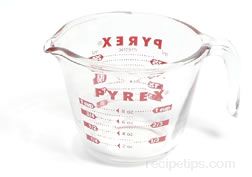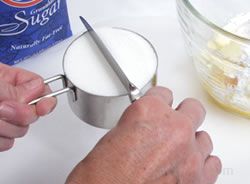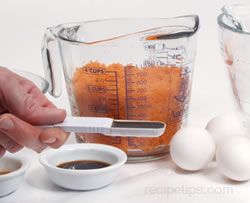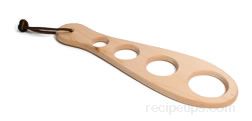Similar Content to: Measuring Cup
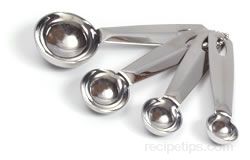
Measuring spoons are available in a variety of sizes and materials. The smallest sets of spoons measure a smidgen, a pinch, and a dash. Other sets contain teaspoon (tsp) and tablespoon (tbsp) measures of 1/8 tsp, 1/4 tsp, 1/2 tsp, 3/4 tsp, 1 tsp, 1-1/2 tsp, 2 tsp, 2-1/2 tsp, and 1 tbsp in U.S. measures or milliliters (ml) of .6 ml, 1.25 ml, 2.5 ml, 3.75 ml, 5 ml., 7.5 ml, 10 ml, 12.5 ml, and 15 ml in metric measures.
Measuring cups are available as either dry or liquid measures. Cups for dry measures generally include 1/8, 1/4, 1/3, 1/2, 1, and 2-cup sizes in U.S. measures or 30 ml, 60 ml, 80 ml, 120 ml, and 240 ml in metric. The liquid measuring cups can range in sizes that measure from 1 teaspoon or 5 milliliters to 8 cups or 2 liters. The smallest cup measures 1 to 6 teaspoons in U.S. measures or 5 to 30 milliliters (ml) in metric. Medium sized cups hold U.S. measures of 1 to 2 cups, 1 to 4 cups, or 1 to 8 cups. For metric measures the sizes come in 100 to 500 ml, 100 ml to 1000 ml (1 liter) or 100 ml to 2 liters.
A variety of special utensils are also available that are designed to measure ingredients in other ways. Measuring spoons and cups can be single slide measures. Measuring cups for semi-soft ingredients, such as butter or shortening can be measured with sliding canisters. Each item is typically created to assist the measuring process in a unique and efficient manner.





